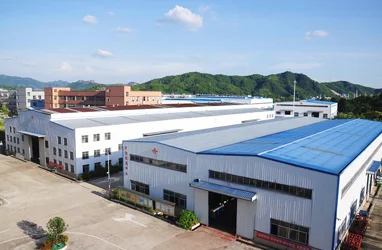Top 5 Copper Processing Plants: Technology, Efficiency, and Cost in 2025
Introduction to Copper Processing Plants
Copper remains one of the world’s most in-demand industrial metals, used in electrical wiring, renewable energy systems, and electronics. With global demand rising, copper processing plants must become more efficient, sustainable, and cost-effective. In this article, we explore the top 5 copper processing plants worldwide in 2025, analyzing their capacity, technology, and innovation. We also highlight the contribution of ORO Mineral, a leading manufacturer of mineral processing equipment, and discuss how to optimize plant performance.

Top 5 Copper Processing Plants in 2025
1. Escondida Copper Mine – Chile

As the largest copper mine in the world, Escondida continues to set the benchmark for copper processing efficiency. Located in the Atacama Desert, this plant produces over 1 million tons of copper annually and uses state-of-the-art concentrators and flotation technologies to maintain high recovery rates.
- Annual Production: 1.1+ million tons
- Key Strength: Massive scale and advanced water-recycling systems
- Technology: Large-scale grinding mills, automated flotation circuits
2. Collahuasi Copper Mine – Chile
Known for its high ore grade, Collahuasi uses energy-efficient concentrators and a focus on digitalization to enhance productivity. The plant has implemented predictive maintenance to reduce downtime and improve throughput.
- Annual Production: 600,000+ tons
- Key Strength: High ore grade leading to lower processing costs
- Technology: IoT monitoring systems, semi-autogenous grinding
3. Morenci Mine – USA
Morenci is the largest copper mine in North America, using a combination of solvent extraction and electrowinning (SX/EW) and concentrator operations. Its ability to adapt to changing ore grades makes it a reliable contributor to U.S. copper production.
- Annual Production: ~450,000 tons
- Key Strength: Integration of SX/EW for low-grade ore
- Technology: Heap leaching, high-efficiency electrowinning
4. Grasberg Mine – Indonesia
The Grasberg complex has transitioned from open-pit mining to underground block caving, requiring advanced processing facilities to handle ore with variable grades. Its concentrators are among the most sophisticated globally.
- Annual Production: 400,000+ tons
- Key Strength: Advanced ore-handling systems
- Technology: Underground ore hoisting, automated control systems
5. Antamina Copper-Zinc Mine – Peru
Antamina is unique as a polymetallic mine, producing copper, zinc, molybdenum, and silver. Its plant design is optimized for multi-mineral recovery and high throughput.
- Annual Production: ~450,000 tons copper equivalent
- Key Strength: Multi-metal processing and flexible operations
- Technology: High-pressure grinding rolls (HPGR), selective flotation
About ORO Mineral

ORO Mineral is a global leader in intelligent mineral processing, screening, and sand washing equipment. Since 2014, the company has been dedicated to providing high-quality solutions for:
- Mineral screening and classification
- Beneficiation and ore separation
- Solid waste resource recovery
- Sand washing and grading systems
Their continuous R&D efforts have resulted in technological upgrades and efficient equipment that lower processing costs and improve recovery rates for copper and other minerals.
Key Equipment for Copper Processing
1. 1.1 kW Belt Magnetic Separator
This equipment efficiently removes ferrous contaminants from crushed ore streams, ensuring higher purity before flotation or leaching stages. Its low power consumption makes it cost-effective for continuous operation.
2. 6-S Shaking Table
The shaking table is ideal for fine-grained copper concentrate recovery. It separates particles based on density and provides a clean concentrate with minimal losses.
3. Gravity Spiral Chute Separator
Spiral chutes are widely used for pre-concentration of heavy minerals. In copper processing, they help recover valuable sulfide particles while reducing the volume of material entering the flotation circuit.
- Advantages: Low maintenance, energy efficient, and easy to install.
- Applications: Suitable for copper, gold, and other metal ores.
Benefits of Modern Copper Processing Plants
- Higher Recovery Rates: Advanced flotation and gravity separation technologies maximize yield.
- Lower Operating Costs: Energy-efficient motors and optimized layouts reduce power consumption.
- Automation & Monitoring: AI and IoT improve real-time control and minimize downtime.
- Sustainability: Water recycling and tailings management minimize environmental impact.
Estimated Costs & ROI
The cost of a copper processing plant varies widely:
- Small-Scale Plant (up to 50,000 tons/year): $5M – $15M
- Mid-Scale Plant (50,000 – 200,000 tons/year): $20M – $80M
- Large-Scale Plant (200,000+ tons/year): $100M+
Despite high upfront costs, modern plants achieve payback periods of 3–5 years due to higher recovery efficiency and reduced energy consumption.
Future Trends in Copper Processing
- Hydrometallurgy Expansion: More SX/EW plants for low-grade ore.
- Digital Twin Technology: Simulation of plant operations to optimize performance.
- Green Processing: Use of renewable energy sources and eco-friendly reagents.
- Modular Plant Design: Prefabricated modules for faster commissioning.
Conclusion
The top copper processing plants of 2025 are setting new benchmarks in efficiency, sustainability, and automation. Companies investing in modern, intelligent equipment—such as that offered by ORO Mineral—can expect reduced operating costs and improved recovery rates. Whether you are planning a small-scale concentrator or a large copper smelter, adopting advanced technology is key to staying competitive in the global copper market.
https://oromineral.com/top-5-copper-processing-plants-technology-efficiency-and-cost-in-2025/